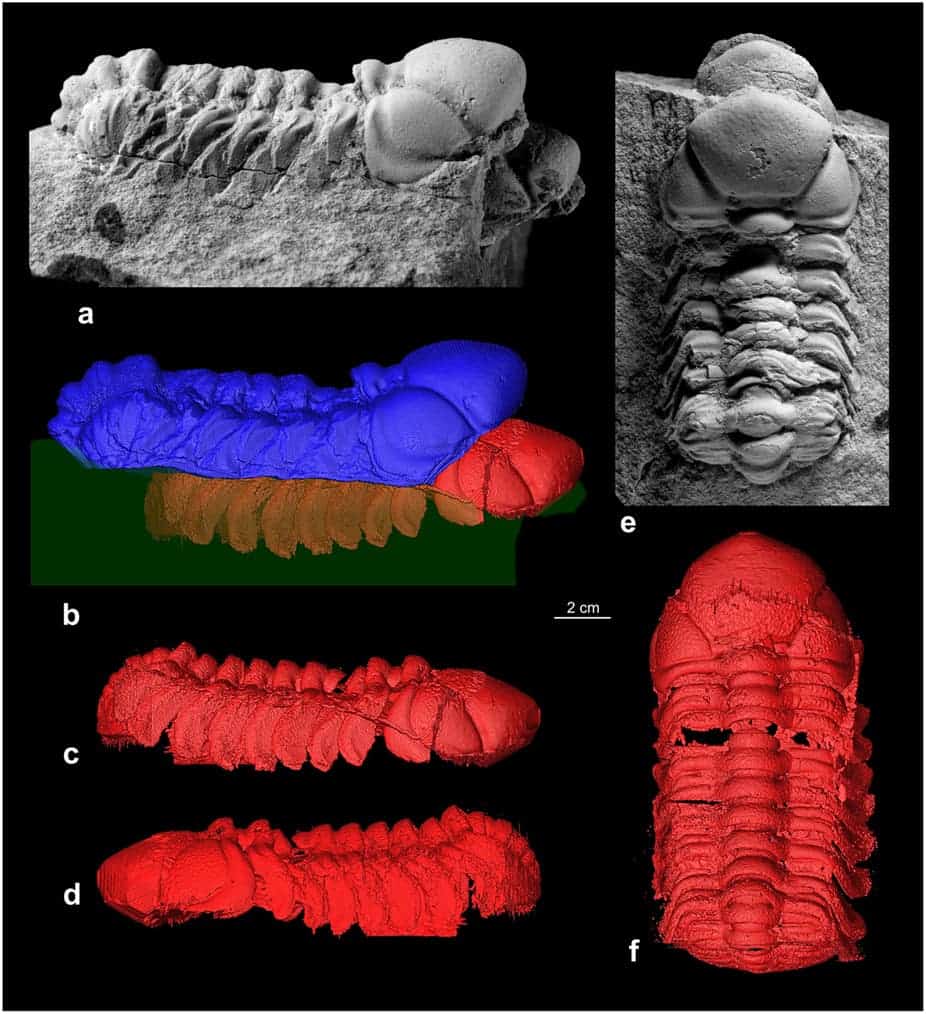Trilobites were some of the most dominant creatures on the face of the planet, thriving from the mid Cambrian 521 million years ago to the start of the Mesozoic, 250 million years ago. Paleontologists have now found the earliest evidence for molting – a trilobite shedding its skin 365 million years ago.
Fossils can reveal many things about an ancient environment; they can help you date it, they can reveal how the climate was shaping up, and they can demonstrate a particular behavior frozen in time, as is the case with the piece of shale Błażej Błażejowski excavated. Błażejowski based out of the Institute of Paleobiology at the Polish Academy of Sciences, was working on the Kowala Quarry in Poland’s Holy Cross Mountains when he found this special trilobite.
The trilobite, looking like a big armored bug, was caught in the act of shedding its exoskeleton, a process called molting. Molting refers to an animal routinely casts off a part of its body (often, but not always, an outer layer or covering), either at specific times of the year, or at specific points in its life cycle. Cats do it with their fur, snakes do it with their skin, and chicken do it with their features, but more remarkably, some insects do it with their entire exoskeleton, basically ripping themselves out of their bodies in an alien-like fashion. Błażejowski quickly understood this was also what his trilobite was going through.
Subsequent X-ray analysis confirmed his initial theory and revealed even more information about the fossil. The creature is a Trimerocephalus, an eyeless trilobite roughly 6.3 inches long and 3 inches wide that lived towards the end of the Devonian. Unfortunately for this specimen, the process seems to have killed him.
“The animal died within the sediment shortly after extricating itself from the old exoskeleton,” Błażejowski and his co-authors write. “The cause of mortality is, of course, not known but might be due to stress of molting or possibly, given the context, death by hypoxia or hydrogen sulfide toxicity within the sediment.”
The fact that such a complex process emerged so long ago is not a surprise, as paleontologists suspected trilobites molted just like modern insects, but finding a fossil that actually captures the process is quite fortunate.
Journal Reference: Błażejowski, B. et al. A moment from before 365 Ma frozen in time and space. Sci. Rep. 5, 14191; doi: 10.1038/srep14191 (2015).










